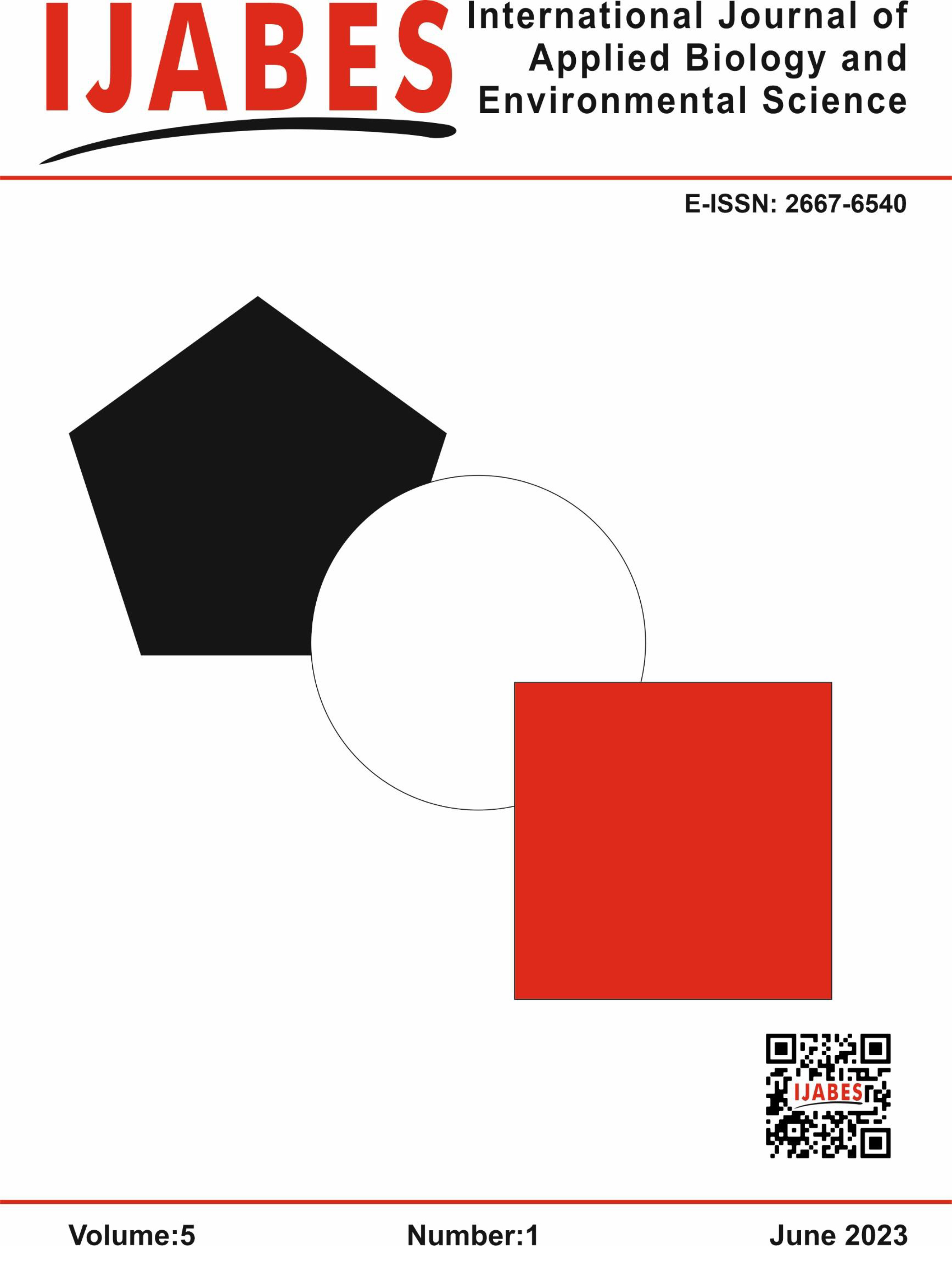








Yayımcı adresi: Hadımköy TOKİ Mevlana Cd. B1/2 D:2
Hadımköy / Arnavutköy / İstanbul

This work Licensed under the Creative Commons Attribution 4.0 International License.
Volume: 3 Issue: 2 - 2021
| 1. | Cover Page I |
| 2. | Contents Pages II - III |
| EXPERIMENTAL RESEARCH | |
| 3. | Viola L. (vıolaceae) generation in thrace region Müge KOÇ, Feruzan Dane doi: 10.5505/ijabes.2021.29392 Pages 18 - 20 In this study, Viola L. species spreading in European Turkey were examined morphologically and chorologically. Samples of Viola species registered in the herbarium of Trakya University (EDTU) were examined and identified according to the Flora of Turkey of Davis. In addition, the geographical distribution query was made using the Plants of Turkey Data Service (TUBIVES), the first volume of Davis's "Flora of Turkey and The East Aegean Island" [3] in Flora of Turkey [10]. Species belonging to the genus Viola, whose existence was stated in Thrace, were included in this study. The locality information of the Viola genus in Tubives was also examined. Locations where samples are collected are marked on the map. |
| REVIEW ARTICLE | |
| 4. | Sebzelerdeki Helmint Yumurtalarının Varlığı ve İnsan Sağlığı Açısından Önemi Dilek Keskin, SEVİL Toroğlu, Meral Yılmaz, Fatma Akyurt doi: 10.5505/ijabes.2021.57966 Pages 21 - 25 Helminth is a general term meaning worm and a very heterogeneous group of organisms. The human health relevant groups are separated according to their general external shape and the host organ they inhabit. The specific classification is based on the external and internal morphology of egg, larval, and adult stages. Helminths form through egg, larval (juvenile), and adult phase. Some of intestinal helminth genus like Enterobius, Ascaris, Ancylostoma, Trichuris and Strongyloides affect human health adversely, especially in developing countries. In green leafy vegetables; while Ascaris lumbricoides, Trichuris trichiura Echinococcus granulosus eggs were found in Turkey, Taenia solium and Diphyllobothrium latum eggs were not observed in humans in Turkey. The diagnosis can be made according to eggs structure of helminths. Helminths enter the human body with water, vegetables and soil. They cause asymptomatic infections by settling in human organs and tissues such as blood, liver, skin, brain (in an asymptomatic infection, a patient is a carrier of the disease microbe or does not show signs of the disease). Helminths are common in underdeveloped countries where untreated wastewater is used for irrigation purposes in agriculture. In order to be protected from helmite eggs, it is necessary to wash the vegetables with plenty of water and use purified water. Medicines such as Mebendazole, albendazole, and pyrantelpamoate drugs are used in the treatment of helminth. In this review, information is given about how helminth eggs, which are important for human health, contaminate vegetables (lettuce, parsley, spinach, green leafy vegetables) and their effects on human health. |
| ORIGINAL RESEARCH | |
| 5. | Preliminary Study on Determination of Ephemeroptera Species of Dağdere-Manisa (Kayacık River) Tuğrul Öntürk doi: 10.5505/ijabes.2021.32932 Pages 26 - 27 Benthos samples were taken from 7 previously determined stations on Kayacık Stream in 2019. The samples were collected with the help of a scoop and sieved in 30, 60, 80 mesh sieves arranged from top to bottom. As a result of the study, 8 taxa from Ephemeroptera were determined. |